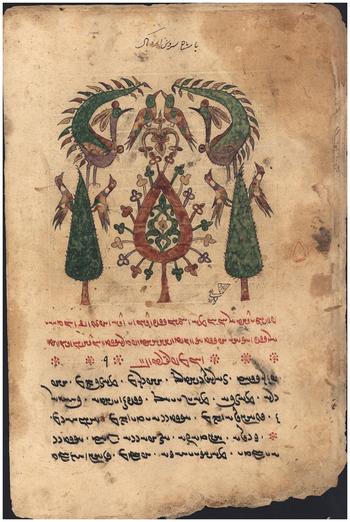Corpus-Avesticum-Berolinense-II
News vom 28.04.2021
A complete edition of all Zoroastrian rituals in Avestan language
We are happy to announce that we received the confirmation that the German Research Foundation (DFG) has decided to fund our twelve-years-project Corpus Avesticum Berolinense (CAB) for the next three years at the Institute of Iranian Studies, Freie Universität Berlin. Two post-docs, a PhD candidate and student assistants have been working on this project since 2018 in order to achieve the huge task to undertake a new edition of all Zoroastrian rituals attested in the Avestan manuscripts
Short about CAB
In the last thirty years, a complete renovation of our understanding of the Avestan texts has been produced. Whereas they have usually understood as fragments from a longer long collection of books, today we believe that most of these texts were composed for the function in which they are still used today: their recitation in the different rituals performed in the Zoroastrian community. In fact, most of very numerous manuscripts containing these texts are complete descriptions of the rituals, including not only the Avestan texts, but also ritual instructions in different languages (depending the manuscript place of production).
Any edition of these texts would be expected to reflect their function and transmission; but, for several and very different reasons (the late antique transmission of the texts; the modern scholarly perspective on the Avesta), none of them does. As a result, the liturgical character of the Avestan texts passed on to us is not taken into account by any of the modern Avesta editions. The scholars edited the texts deprived of their ritual and performative contexts, many of them were even arranged in a different order as they are used in the performances and many variants and combinations were not edited at all, since they were considered just secondary ritual re-arrangements.
The new edition bears the consequences of the new insights and tendencies in the Avestan studies since the 1950ies. It will be the first edition which presents all texts belonging to the Avesta in its concrete shape, i.e., as ritual texts and strictly according to the manuscripts. This textual concreteness sets new requirements for the editorial practice:
- the representation of the diversity of the rituals;
- the representation of the performative character of texts;
- the representation of a historical-topical concreteness of the text.
The proposed edition builds on the previous work of the Avestan Digital Archive, led by Alberto Cantera at the University of Salamanca between 2008 and 2016 and since May 2016 at the FU Berlin. Beside the finding of almost 300 hundred manuscripts, its most important achievement has been the discovery of a new branch of the transmission: the Iranian one, whereas all previous editions rely basically on Indian manuscripts. The Iranian manuscripts has brought to light that the Avestan transmission is a dynamic, fluid transmission deeply influenced by the ritual performance. Under these circumstances, the reconstruction of an ahistorical archetype seems no longer reasonable. We intend instead the presentation of the rituals as they were historically performed. The space-temporal we have chosen is the Safavid period in the region of Yazd-Kerman. The manuscripts produced there show still the greatest ritual variety and the most archaic spellings. Numerous apparatuses will provide insights into the diachronic and diatopic textual and ritual variations.

